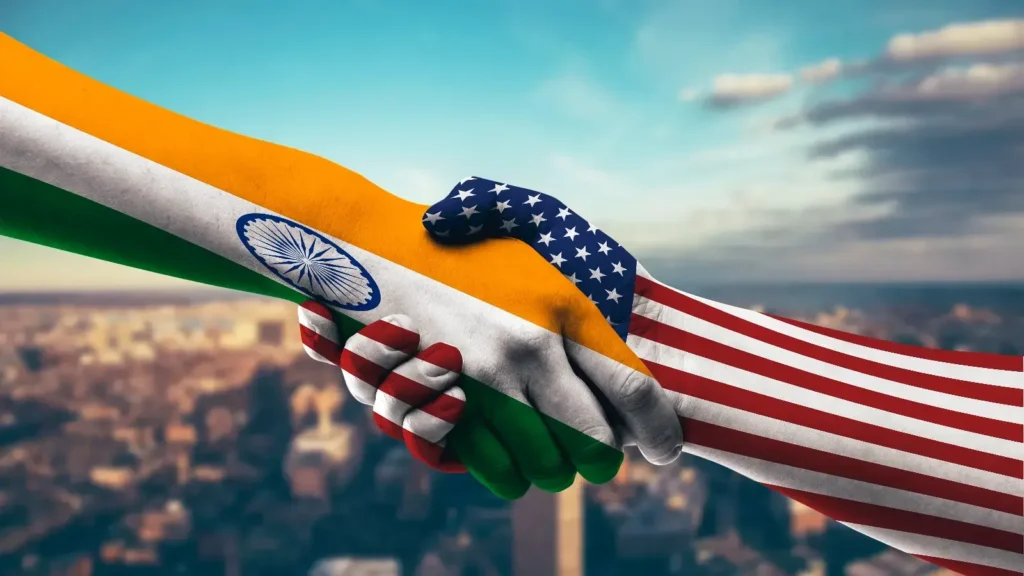In 2025, trade relations between India and the United States have entered a period of heightened tension and rapid developments. What began as complaints over trade barriers and protectionism has escalated into sweeping tariffs, retaliatory measures, and intense negotiations.
The trajectory of these talks—and in particular, the changing tariff regime—has major implications not just for exporters and importers, but also for geopolitical alliances, domestic industries, and global supply chains.
In this article, we’ll break down:
-
The recent tariff changes and policy shifts
-
Why they were imposed and what both sides are demanding
-
The impact on trade, Indian businesses, and US interests
-
Future scenarios and what to watch going forward
What Has Happened: Tariff Changes & Key Moves
“Reciprocal Tariffs” by the US

-
The US introduced a 25% reciprocal tariff on Indian goods in mid-2025.
-
An additional 25% punitive tariff was imposed due to India’s continued purchase of Russian oil, raising the effective tariff rate on many goods to nearly 50%.
India’s Countermoves
-
India has resisted US demands to open up its agriculture and dairy markets, especially for genetically modified products.
-
It is considering lowering tariffs on over $23 billion worth of US imports if the US rolls back its punitive measures.
Signs of Possible Easing
-
Indian officials have indicated that the US may soon reduce its penal tariff from 25% to around 10–15%.
-
Both sides have signaled optimism, suggesting progress toward a mutually beneficial trade agreement.
Affected Sectors
The new tariffs have particularly impacted:

-
Textiles, gems & jewellery, leather goods – all labor-intensive sectors heavily reliant on US markets.
-
Small and medium enterprises (SMEs) – facing rising costs and shrinking profit margins.
-
Certain goods like pharmaceuticals and electronics remain exempt, but overall competitiveness has suffered.
Why These Changes: The Drivers

US Perspective
-
Energy & Russia Factor – India’s purchase of Russian oil is seen as undermining US sanctions.
-
Trade Barriers – The US claims India’s high import tariffs and regulatory barriers limit market access.
-
Domestic Politics – US farmers and exporters are demanding better access to India’s large consumer base.
India’s Perspective
-
Energy Security – India argues that its energy needs cannot be compromised by cutting Russian oil imports.
-
Protecting Agriculture & SMEs – Opening markets too quickly could hurt millions of livelihoods.
-
Negotiation Leverage – India is tying any tariff cuts to a rollback of US punitive measures.
Impacts So Far
-
Falling Exports: Indian exports to the US dropped significantly in mid-2025, with key labor-intensive goods becoming uncompetitive.
-
Business Stress: SMEs are under pressure; many are exploring alternative markets like the EU, UK, and Africa.
-
Diplomatic Strain: Trade disputes linked with geopolitical issues have added to mistrust between the two countries.
-
Price Concerns: Higher tariffs risk raising costs for consumers and disrupting supply chains.
Strategic Options for India

-
Diversify Export Markets – Reduce reliance on the US by expanding into EU, Middle East, and Africa.
-
Value Chain Upgradation – Focus on higher-quality, branded, and compliance-friendly exports.
-
Engage in Standards Alignment – Reduce non-tariff barriers through harmonized regulations.
-
Use WTO Platforms – Explore remedies if punitive tariffs violate global trade norms.
-
Calibrated Concessions – Allow limited market access in non-sensitive categories to secure tariff relief.
What to Watch Next
-
Whether the US formally rolls back its 25% penal tariff.
-
India’s stance on tariff cuts for $23B+ worth of US imports.
-
Progress on sensitive issues like agriculture, dairy, and GM products.
-
Reactions from SMEs in textiles, gems, and leather sectors.
-
How India’s export diversification efforts accelerate in the coming months.







